The Cultural and Artistic Journey of Japanese Waves
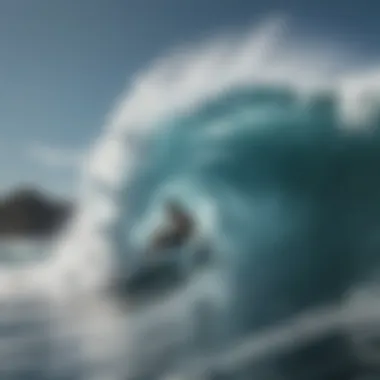
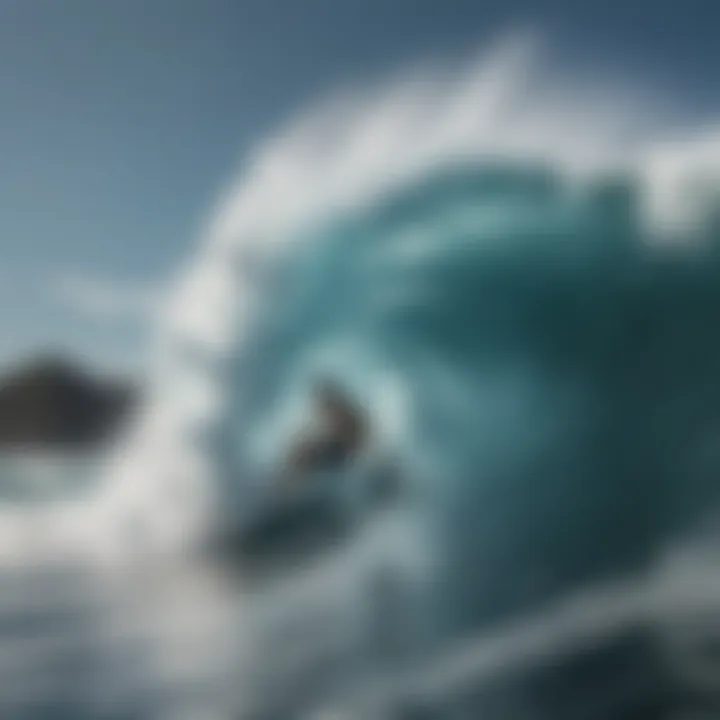
Intro
In the vast expanse of Japanese art and culture, waves are more than mere visual elements; they symbolize the very essence of life, resilience, and the ever-changing nature of existence. The significance of wave imagery runs deep, flowing through centuries of artistic expression and intertwining with Japan’s philosophical leanings. From the celebrated prints of Katsushika Hokusai to contemporary interpretations seen in urban artworks, waves remain a potent emblem of both beauty and power.
This article aims to dissect the complexities behind wave imagery in Japan, shedding light on its historical roots and the cultural weight it carries. We will explore the symbolism that connects traditional art forms with modern-day interpretations, particularly within the world of watersports. The relationship between Japan and water is rich and storied, offering a fertile ground for understanding how these motifs have evolved and adapted over time.
By delving into techniques employed by artists and scrutinizing iconic works, this narrative seeks to outline how waves are not simply a visual motif but also a reflection of humanity's relationship with nature. Readers interested in art, culture, and the dynamic realm of watersports will find insights that link historical practices with contemporary vibrancy. The undulating forms of waves will take center stage as we examine their influential role across various mediums.
As we proceed, let us embark on a journey through art techniques, safety guidelines, and spiritual symbolism, where waves encapsulate the duality of calmness and chaos.
Techniques and Skills
Fundamental Techniques for Beginners
To appreciate wave imagery in Japanese art fully, one must first understand the foundational techniques that artists have employed over the centuries. These techniques not only create stunning visuals but also evoke deeper meanings rooted in the cultural psyche of Japan.
- Printmaking: Traditional woodblock printing (ukiyo-e) is a key method that showcases waves. Artists carefully carve intricate designs on wooden blocks, painting them with vibrant colors and pressing them onto paper. Understanding this process gives insight into the meticulous nature of the artistry involved.
- Brushwork: The fluidity of strokes used in ink painting highlights the movement of waves. Artists often use brushes dipped in black ink to create varying levels of intensity, allowing the waves to convey a sense of motion.
- Color Theory: Different hues can represent various aspects of the ocean. For example, deep blues may symbolize depth and mystery, while lighter shades can evoke tranquility. Beginners are encouraged to experiment with color blending to enhance their work.
Understanding these techniques is a stepping stone for anyone eager to explore wave imagery in art. The craftsmanship behind these artworks enriches the experience and appreciation of the pieces.
Advanced Skills for Experienced Artists
Once a solid foundation is established, artists can delve into more advanced skills to further capture the beauty and complexity of wave imagery in their work. These skills often involve mixing traditional methods with contemporary practices.
- Mixed Media: Incorporating various materials like fabric, sand, or even digital tools allows for innovation. Artists may combine physical textures with digital editing to create unique representations that traditional methods alone cannot achieve.
- Dynamic Composition: Understanding how to arrange elements within the artwork can dramatically alter the viewer's perception. Using asymmetrical balance can create a sense of movement, making waves feel alive on the canvas.
- Cultural References: Experienced artists should delve into Japan's rich mythology surrounding water and the sea, creating layers of meaning within their work. Referencing stories like the Dragon King or the folklore associated with certain coastal areas can add depth.
As artists refine their skills, the way they interpret waves can transform, portraying not just nature’s beauty but also humanity's intricate relationship with the ocean.
Waves are not just painted or printed; they speak of stories, adventures, and a myriad of emotions.
Safety and Gear
Essential Safety Measures in Watersports
Understanding wave imagery is one thing, but experiencing it through watersports is another. Participants in watersports must prioritize safety to enjoy their connection with the water fully. Here are some essential safety measures:
- Personal Floatation Devices (PFDs): Always wear a life jacket or PFD, regardless of your swimming skills. This could be the difference between a thrilling experience and a dangerous situation.
- Knowledge of Conditions: Familiarize yourself with the water conditions. Understanding wave patterns, currents, and tidal charts is critical to ensuring a safe adventure.
- Buddy System: Engaging in watersports is safer with a partner. Not only does it enhance security, but it also enriches the experience.
Gear Reviews and Recommendations
For watersport enthusiasts eager to engage with the elements safely, selecting appropriate gear is crucial. Here are some recommendations:
- Paddle Boards and Surfboards: Brands like Starboard and Firewire offer high-quality boards tailored for various skill levels. Choosing equipment that suits your experience will enhance your performance on the waves.
- Wetsuits: Opt for wetsuits from companies like O'Neill or Rip Curl. They maintain body temperature and provide protection against scrapes and potential hazards in the water.
- Leashes and Fins: A reliable leash ensures you stay connected to your board, while fins can enhance maneuverability. Choices vary based on the board type and the surfing environment.
By integrating safety measures and suitable gear, enthusiasts can not only enjoy but also appreciate the aesthetic beauty of wave imagery in action.
Prologue to Japanese Wave Imagery
In discussing wave imagery within Japanese art, one uncovers a tapestry of cultural significance and historical depth. Waves are not mere decorations; they embody profound philosophical meanings and aesthetic values that resonate beyond Japan, leaving an imprint on art and culture worldwide. This exploration aims to illuminate the intricate relationships between waves, nature, and the human experience, especially from the viewpoint of water sports enthusiasts and outdoor adventurers.
Understanding Japanese wave imagery provides insights into the interplay between nature and artistic expression. The waves depicted in art have transitioned through various forms, reflecting the changing consciousness and relationship with the sea among the Japanese. Furthermore, these wave motifs have served not only as artistic expressions but also as symbols of resilience, transience, and elegance. In essence, they offer a lens through which one can view the philosophical underpinnings of a society that has long revered the elements.
Historical Context
To grasp the significance of wave imagery, one must first consider its historical background. The emergence of wave motifs can be traced back centuries, deeply rooted in the Shinto belief system which emphasizes the spirituality of nature. Ancient Japan, an archipelago, had intrinsic connections to the ocean, thus influencing artistic expressions as early as the Heian period (794-1185). It was during this era that literary works and poems began to explore themes of nature, often reflecting waves as powerful entities that shape human destiny.
The turning point for visual representation can be seen clearly in ukiyo-e prints. Artists like Katsushika Hokusai and Utagawa Hiroshige brought waves to life in dynamic forms, combining traditional woodblock techniques with innovative perspectives. Notably, Hokusai’s famous piece, The Great Wave off Kanagawa, captured the ferocity and beauty of the ocean, establishing a legacy that transcends cultural boundaries and influences countless artists and movements globally.
Over time, waves began to symbolize both beauty and danger, reflecting the duality of nature. They became pivotal in expressing concepts such as impermanence, aligning closely with Buddhist philosophies that permeated Japanese culture.
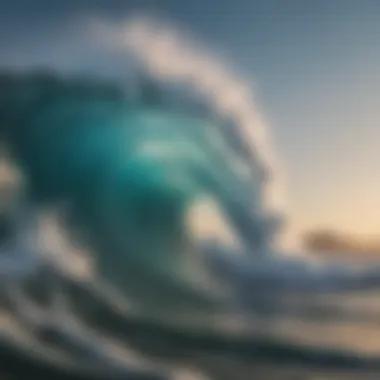
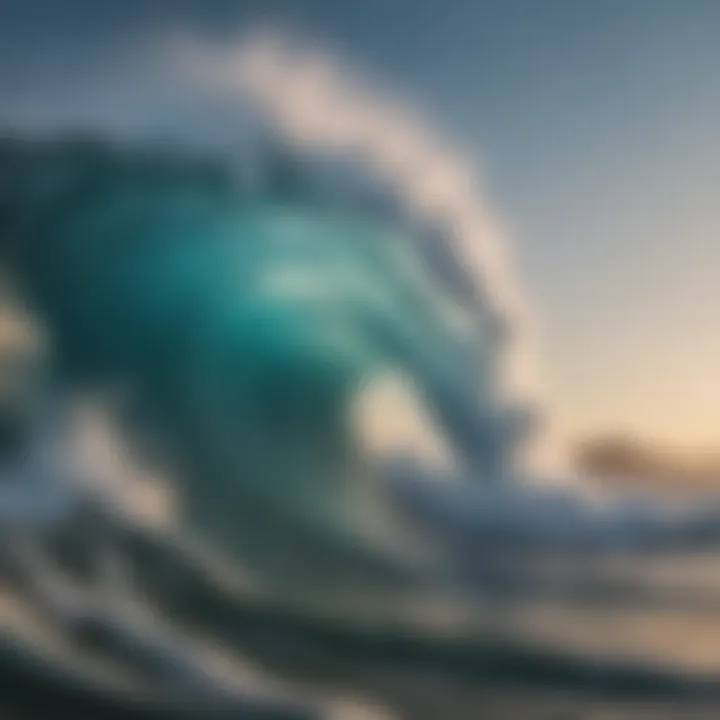
Cultural Significance of Waves
The role of waves in Japanese culture cannot be overstated. Beyond their aesthetic appeal, waves serve as potent symbols, encapsulating deep metaphors that resonate with the ebb and flow of life itself. In many ways, waves mirror the transient nature of existence, reinforcing the idea that change is an inherent aspect of life. This is encapsulated in the Japanese term mono no aware, which conveys an appreciation for the fleeting moments of beauty, much like the rhythm of waves on the shore.
From a practical standpoint, waves have influenced various cultural practices, from fishing techniques to spiritual rituals. Coastal communities have long relied on the ocean, adapting their lifestyles in harmony with its rhythms. This synergy between mankind and sea is highlighted during festivals celebrating the ocean, where waves become not just objects of admiration but integral to spiritual and communal identity.
The waves, thus, are not only artistic motifs but also a reflection of a societal relationship with nature, encapsulating both reverence and acknowledgment of the forces beyond human control.
In summary, the significance of wave imagery in Japanese art extends far beyond aesthetic attributes, encompassing a rich historical context and a profound cultural depth that continues to inspire modern interpretations. Examining this imagery opens a dialogue about the environment, society, and the continuous interplay of nature with human existence.
Traditional Wave Artistry
Traditional Wave Artistry serves as a foundational pillar in understanding the visual and cultural language of Japan. Waves in this context are more than just mere representations; they embody a synergy of beauty, power, and philosophical underpinnings that have fascinated artists and admirers alike. The meticulous craft of wave depictions showcases not only artistic skill but also an interplay between nature and human creativity that resonates deeply throughout Japanese history.
Ukiyo-e Prints
Ukiyo-e prints, literally meaning "pictures of the floating world," rose to prominence during the Edo period and showcased an array of subjects, with waves often taking center stage. The visual richeness of these artworks distinguishes them from Western traditions, making them a vital inclusion in this exploration.
Key Artists and Their Contributions
When we think of Ukiyo-e, Hokusai and Hiroshige are at the forefront. Hokusai's iconic wave piece—"The Great Wave off Kanagawa"—has transcended its medium, becoming a symbol of both Japanese art and an artistic moment in time. Hiroshige, on the other hand, leveraged the fluidity of water through a more tranquil perspective, capturing softer, more harmonious wave images in his landscapes. This duality in approach highlights the versatility and rich dialogue between artists within this genre.
The significant characteristic of these artists is their ability to convey emotions and narratives through their representations of waves. Their unique styles contribute distinctively to the overall understanding of wave imagery in Japanese culture. However, while Hokusai's work often speaks to the ferocity and dominance of nature, Hiroshige’s method offers insight into the gentle nature and transitions of water, showcasing the contrasts that both styles present in this article.
❤️ Key Feature: The emotive engagement with waves provides beneficial insights into nature as perceived through the lens of tradition, fostering a deeper appreciation of not only the artistry but also the Japanese relationship with the natural world.
Techniques in Ukiyo-e Wave Depictions
The techniques used in Ukiyo-e prints for depicting waves are intricate and fascinating. Utilizing woodblock printing, artists would layer colors to create depth and movement in their compositions. The swirling lines and dynamic forms present a sense of motion that is both visually stimulating and narratively engaging.
The key technique that stands out is the use of contrasting colors against the white of the waves, generating a striking visual impact. This enhances the sense of chaos and order within the art. The specific feature here is the way light interacts with the water, often invoking a shimmering effect that adds life to the artwork. However, this technique requires a high degree of precision and has its limitations; variations in dye quality or paper can lead to unintended results.
Overall, these techniques highlight the harmony between art and nature, making them a beneficial study point in this context.
The Great Wave off Kanagawa
This standout work by Hokusai is not merely a piece of art; it's an emblem of wave imagery itself, epitomizing the staggering beauty and turmoil of nature.
Analysis of Composition
The composition of "The Great Wave off Kanagawa" is masterfully dynamic. It features an enormous wave that almost seems to leap out of the print, dwarfing Mount Fuji in the distance. This juxtaposition illustrates the majesty of nature and emphasizes the power of the ocean against the serene backdrop of Japan.
A distinctive feature of this artwork is its triangular shape, created by the wave curling over. This directs the viewer’s eye in a captivating movement across the print—a form of visual storytelling. The emotions evoked by the wave's power not only symbolize nature's might but also reflect the human condition in confronting such forces. This compelling arrangement makes it a significant choice to include in this narrative, as its complexity showcases the intersection of aesthetics and message.
Impact on Art Movements Worldwide
The reverberations of Hokusai’s work can be found far beyond Japanese borders. Artists across Europe and America found inspiration in this wave imagery, leading to movements such as Impressionism and Post-Impressionism, where the manifestation of light and color became paramount. The impact extends even to modern contexts, influencing design, fashion, and digital arts.
The key aspect of this influence is its universal appeal; the imagery of waves transcends cultural barriers and invites interpretation from various perspectives. The unique ability of this artwork to inspire diverse artistic philosophies showcases why it is such a vital component in discussions of wave imagery.
"Art is a reflection of life; thus, to understand its various forms is to understand humanity itself."
Symbolism Within Japanese Culture
The exploration of wave imagery in Japanese culture extends far beyond mere aesthetics; it serves as a profound symbol encapsulating various human experiences and environmental reflections. Waves represent much more than physical movements of water; they mirror transient moments in life, embody spiritual connections, and resonate within the realms of poetry and literature. Understanding these symbols provides insight into the intertwined relationship between art, nature, and human emotion.
Waves as a Metaphor
Transience and Change
Transience and change are pivotal themes reflected in wave imagery. Waves, with their relentless ebb and flow, symbolize the fleeting nature of life itself. This characteristic of waves resonates deeply within the context of Japanese culture, where impermanence is celebrated through various artistic expressions, such as the concept of mono no aware. This concept underscores beauty in the transient, making waves an especially fitting metaphor for life's ephemeral moments.
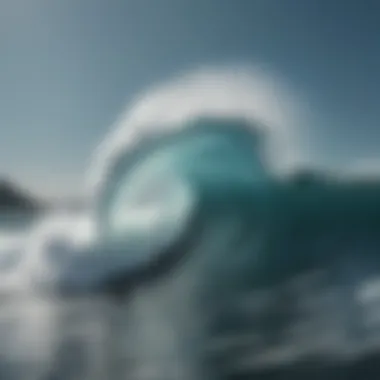
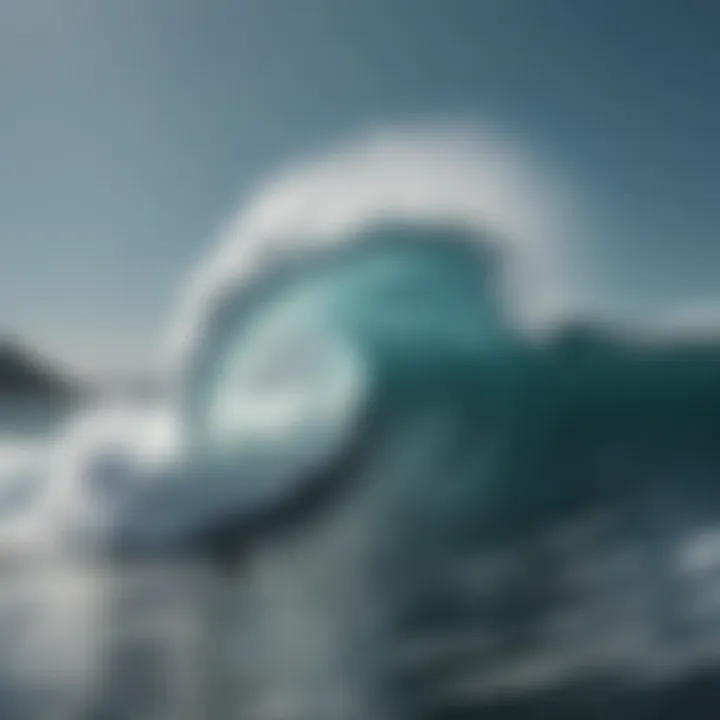
Waves remind individuals that just as tides rise and fall, so too do the experiences and emotions that shape human existence. This notion of change thus enriches the cultural tapestry, offering both comfort and reflection on life’s fleeting nature.
Moreover, the unique feature of waves in their ever-changing forms can be seen as a reminder to embrace growth amidst life's challenges. However, an ongoing downside may also be acknowledged; the constant flux of life can create feelings of uncertainty. Understanding this duality is advantageous, allowing individuals to gain a balanced perspective on life's unpredictable nature.
Spiritual and Natural Connections
Waves also embody deep spiritual and natural connections in Japanese culture. For many, the ocean and its waves are seen as sacred, symbolizing the connection between the physical world and spirituality. This belief underscores the essence of nature as more than just an environment; it becomes a living entity that influences and interacts with humanity.
The waves serve as a metaphorical bridge, connecting people with the divine and the natural elements surrounding them. This conceptualization has led to spiritual practices that honor the sea, where rituals may center around its tides. The interactions between waves and the shore manifest not just visually, but emotionally, reflecting internal human experiences.
The unique aspect of these spiritual connections is the honor bestowed upon nature, teaching respect and reverence for natural phenomena. It promotes a harmonious existence, where humans recognize their role within the broader ecosystem. Yet, one must also acknowledge challenges when interpreting these connections; oversimplifying spiritual meanings can sometimes lead to misunderstandings about nature itself.
Waves in Poetry and Literature
Waves have also permeated Japanese poetry and literature, often serving as powerful symbols within various narratives. The concept of waves as metaphorical vehicles appears in classic texts such as Haiku, where poets convey feelings of longing, reflection, and the transient beauty of existence, aligning perfectly with the themes seen in water imagery.
For instance, a single line of poetry may evoke waves crashing against the shore, embodying emotions of love lost or the cyclical nature of life. In literature, authors often weave narratives where characters reflect on their journeys alongside rolling waves, using them as a backdrop to illustrate their inner turmoil or serenity.
- Themes in waves within literature include:
- Reflection on personal experiences
- Exploration of human emotions
- Symbolism connected to nature and spirituality
When examining the relationship between waves and literary traditions, it's clear that Japanese cultural expressions utilize this imagery to encapsulate complex human emotions, offering readers much to ponder.
Through these various representations, waves transcend simple artistic elements, emerging as potent symbols of continuity, change, and deep connection to both nature and the human experience.
Modern Interpretations of Wave Imagery
The exploration of modern interpretations of wave imagery is crucial to understanding how traditional themes have morphed in today’s art. Waves, as symbols, continue to resonate with contemporary artists and viewers alike, often conveying complex ideas that blend both past and present. Furthermore, the evolution of these representations reflects broader societal values, fears, and hopes.
Contemporary Art
Influence on Current Artists
The influence on current artists showcases how contemporary creators draw upon classical wave imagery to express their individual perspectives. Artists today often employ the fluidity and dynamism of waves to symbolize the ebb and flow of life’s challenges and transformations. This connection to water, a fundamental aspect of existence, enriches their work, making it accessible and relatable.
The key characteristic that stands out in this context is the layer of emotional depth these artists weave into their creations. Using waves, they can encapsulate a range of human experiences—tranquility, turmoil, and everything in between. This choice is beneficial for our article as it highlights the transformative power of nature within artistic expression.
Moreover, the unique feature of this influence is the intersection of the traditional and utopian. Artists reference historical pieces, infusing them with modern mediums and techniques, thereby challenging perceptions of permanence versus change.
However, there can be disadvantages as well. This blending might lead to misinterpretations where the original cultural context gets overshadowed by contemporary aesthetics. Balancing respect for tradition with innovative forms is a delicate task.
Cross-cultural Adaptations
Turning to cross-cultural adaptations, it’s essential to understand how wave imagery transcends Japanese borders. Artists around the globe have embraced this symbol, incorporating it into their work, leading to an enriching dialogue between cultures. This adaptation not only broadens the audience for these motifs but also introduces diverse interpretations and meanings.
A defining feature of cross-cultural adaptations is their capacity to celebrate diversity while maintaining a core resonance with traditional meanings. The ability of artists to transpose these symbols into various cultural narratives fosters a global appreciation and understanding of wave imagery.
This approach is beneficial for our article as it emphasizes the universal nature of waves, highlighting how a single image can resonate across different cultural frameworks. However, this adaptability may come with the risk of diluting specific cultural significances, which must be navigated with care by artists and scholars alike.
Waves in Digital Media
As we advance into the digital realm, waves in digital media emerge as an exciting genre that incorporates traditional concepts into modern technology.
Vector Graphics and Animation
Digital artists frequently utilize vector graphics and animation to render wave imagery in ways that were previously unimaginable. The flexibility of vector graphics allows creators to manipulate shapes and colors with precision, often leading to striking visual representations of waves that catch the eye with their fluidity and motion.
This method stands as particularly advantageous for our discourse because it merges technical prowess with artistic vision. The key characteristic of this approach is its ability to produce scalable images without loss of quality, enabling artists to explore intricate designs while maintaining clarity across platforms.
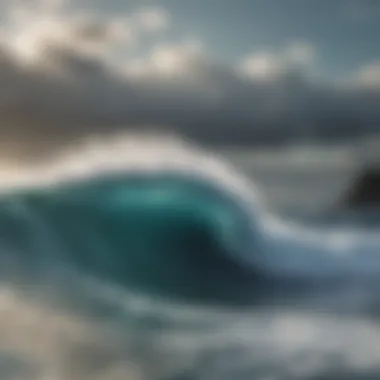
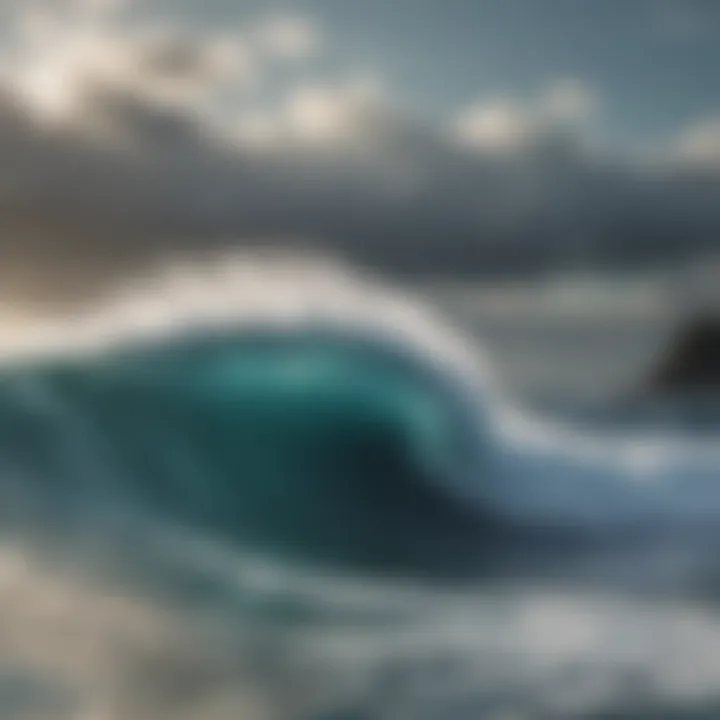
However, working within digital mediums can present its own challenges. Accessibility becomes a concern; not all aspiring artists might have access to sophisticated software or knowledge, potentially sidelining talent that relies on more traditional techniques.
The Role of Waves in Video Games
Finally, examining the role of waves in video games opens yet another fascinating avenue for interpretation. Designers employ wave imagery not only as a backdrop but also as a gameplay element, embracing the chaos and unpredictability that waves represent.
This particular aspect possesses a uniqueness that stands out for its ability to engage users emotionally and intellectually. By weaving wave mechanics into narratives, games offer players immersive experiences that challenge their perceptions of movement and strategy.
Including waves in game design is beneficial since it enables developers to create interactive experiences that resonate deeply. Yet, reliance on such motifs can confine creativity to an extent, steering developers to adhere to familiar tropes rather than exploring innovative narratives.
The Relationship Between Waves and Watersports
Waves have a special bond with watersports that transcends mere aesthetics. They are not just part of the scenery but are life forces driving various activities. Whether it’s surfing, paddleboarding, or jet skiing, these sports thrive because of waves. In the context of this article, exploring this relationship becomes crucial. Just as traditional Japanese art portrays waves with dense cultural meanings, the actual waves themselves serve as a canvas for modern athletes to shape their experiences.
When enthusiasts engage with waves, they gain a greater understanding of nature's rhythm. The excitement of riding a wave is more than just physical; it reflects emotional engagement with the environment. This connection fosters a sense of community among enthusiasts, as shared experiences on these aqueous waves build bonds that last a lifetime. Waves, thus, become a resource not just for activity but also for forging friendships and crafting lasting memories.
Waves as a Resource for Watersports
Waves serve as essential resources for a broad spectrum of watersports, both in Japan and globally. Their shapes and patterns affect how athletes navigate through and embrace water. Various sports have evolved around the unique characteristics of waves, with surfers constantly seeking out breaks that offer the best ride. For instance, the renowned beaches of Chiba attract surfers year-round, thanks to the consistent swell generated by seasonal winds. The waves here contribute significantly to local surf culture, inviting both novice and expert surfers to test their skills.
Participating in these sports also raises environmental awareness. As athletes engage with waves, they become advocates for ocean conservation, often participating in or supporting beach cleanups. It’s a fascinating twist: the very waves that bring joy can also kindle a passion for safeguarding their source.
Cultural Festivals Celebrating Waves
Events and Activities
Cultural festivals highlighting waves and watersports are a vibrant tapestry of community spirit and tradition. Events like the Inamuragasaki Surf Festival celebrate not only the sport itself but also the culture surrounding it. These festivals often showcase events that blend competition with cultural exhibitions, allowing participants and spectators to immerse themselves into the ocean's allure.
One key characteristic of these events is their ability to draw together a diverse crowd—from surfing veterans to curious onlookers. This creates an atmosphere ripe for sharing knowledge, tips, and experiences. While offering entertainment, they also play a role in educating participants about environmental stewardship and the importance of preserving coastal ecosystems.
A unique feature of these celebrations is the blend of performance and participation. Spectators often get the chance to learn and try their hand at different watersports, fostering a deeper appreciation for the skills required to navigate the waves. However, organizing such events can be challenging. Weather conditions can change on a dime, and ensuring safety must always take precedence.
Weaving Insight from Traditional to Modern Sports
Bringing together traditional arts and modern sports is an engaging aspect of Japanese culture related to waves. Events often incorporate aspects of traditional Japanese art forms into modern sports demonstrations. Participants may witness calligraphy being done live alongside surfing competitions, for instance, fostering a unique appreciation for both art and sport.
This connection serves to bridge generations and inspire newcomers. The visual representation of waves in traditional artwork finds its contemporary counterpart in the fluid motions of surfers riding these same waves, creating a narrative that connects the past and present.
A distinct advantage of this weaving of experiences is the unique perspective it offers. Those involved are not just experiencing the sport; they are engaging with a cultural narrative that enriches their participation. This helps to sustain interest in traditional arts within a modern context, keeping both forms alive for future generations.
"Waves, both in art and in sport, provide a timeless connection between our past and our present, urging us to respect nature as we revel in its beauty."
Through these insights, waves become more than a backdrop for sports. They transform into a dynamic resource that carries with it the weight of tradition and the thrill of modernity.
Ending: The Enduring Legacy of Japanese Wave Imagery
Japanese wave imagery embodies more than just artistic expression; it is a profound representation of cultural values, historical narratives, and the intrinsic bond between humanity and nature. The legacy of these visuals is entrenched in both traditional and modern contexts, revealing how waves serve as vessels transporting meanings through time.
One of the striking elements of this legacy is how Japanese artists have harnessed wave motifs to illustrate themes of transience, strength, and aesthetic beauty. This approach is seen across centuries, from ukiyo-e prints to contemporary artworks. As waves shift and break, they echo the complexities of life and human experience, reminding us to embrace change and uncertainty.
The Fusion of Tradition and Modernity
Japanese wave imagery stands as a testament to the continuity of cultural identity amidst evolving artistic practices. In recent years, various genres have emerged, merging traditional techniques with modern influences. Artists are now exploring the fluidity of waves in digital art, capturing their dynamism through animations and immersive experiences. This fusion has brought new life to age-old motifs, making them relevant in a world captivated by rapid technological advancements.
- Traditional techniques such as woodblock printing remain influential, retaining their significance in contemporary practice.
- Emerging artists are drawing inspiration from historical representations, yet they often incorporate modern narratives that resonate with today's society.
By bridging the old and the new, this wave imagery fosters a dialogue between generations, highlighting how past experiences shape our present and future.
Reflections on Nature and Human Experience
Waves symbolize nature's power and grace, serving as constant reminders of our connection to the earth and its rhythms. In Japanese culture, the sea and waves are integral to identity, reflected in folklore, literature, and art. This reflects an awareness that transcends mere aesthetics—waves embody existential concepts, driving home the values of harmony and resilience.
As individuals engage with waves—whether through art, literature, or watersports—they participate in a dance with nature. The experience of riding a wave or simply observing its movement allows for a deeper understanding of life's ebbs and flows. This interaction encourages appreciation for the environment and a deeper acknowledgment of one's place within it.
"Waves teach us the value of patience; they come and go, and so must we understand our own journeys."
Through the lens of Japanese wave imagery, both past and present coexist, inviting each generation to reflect on their relationship with nature, culture, and their artistic legacy. As wave imagery continues to evolve, its core messages remain potent, ensuring its significance throughout time.















